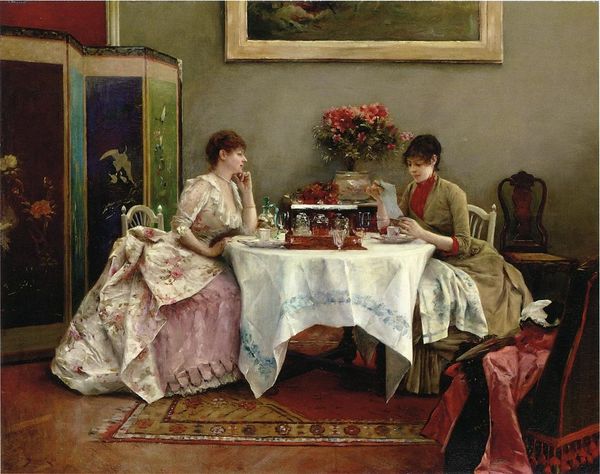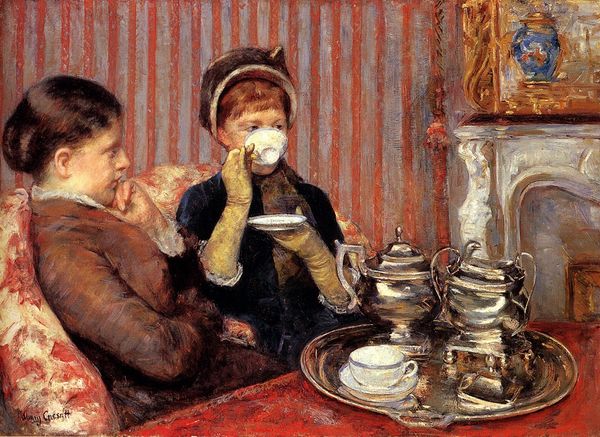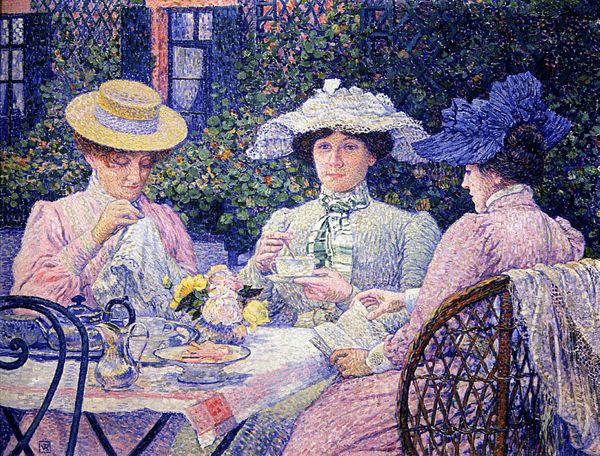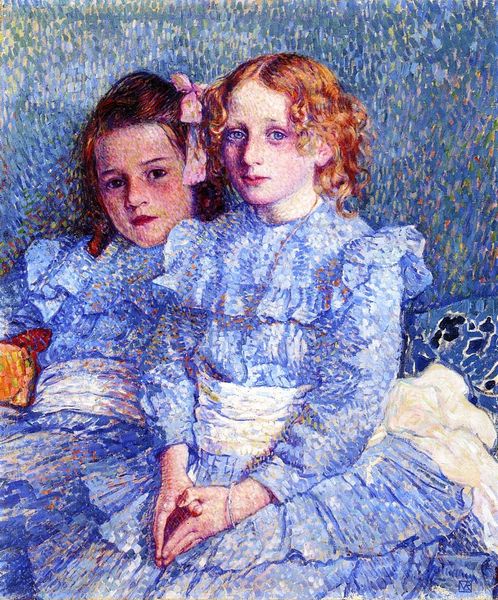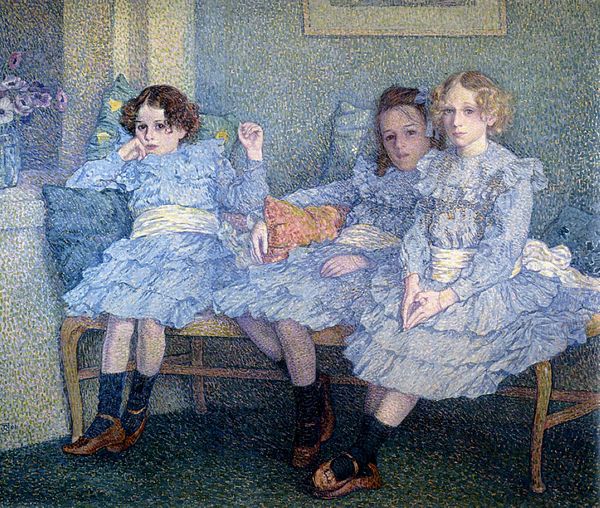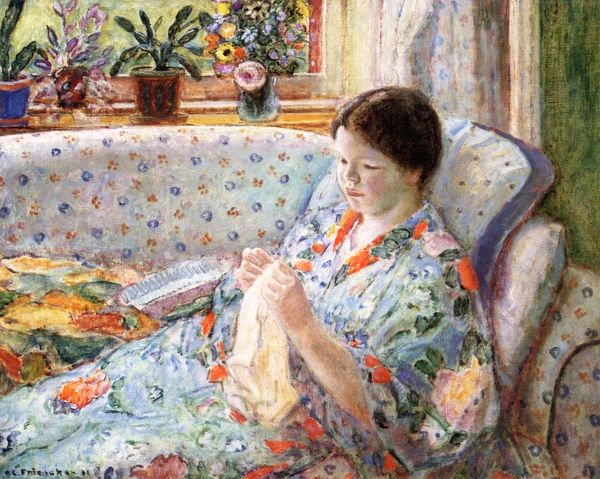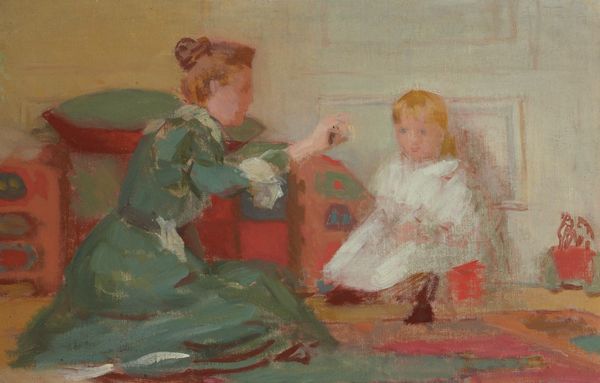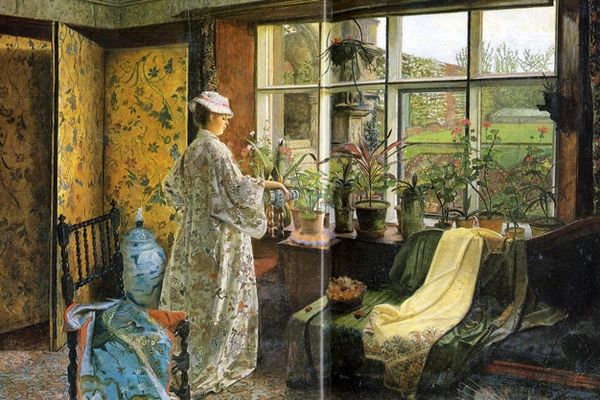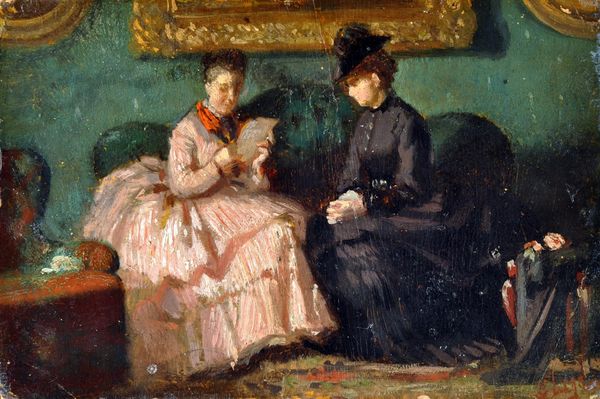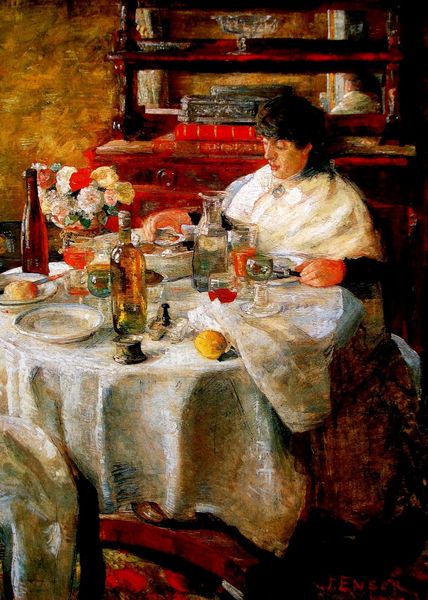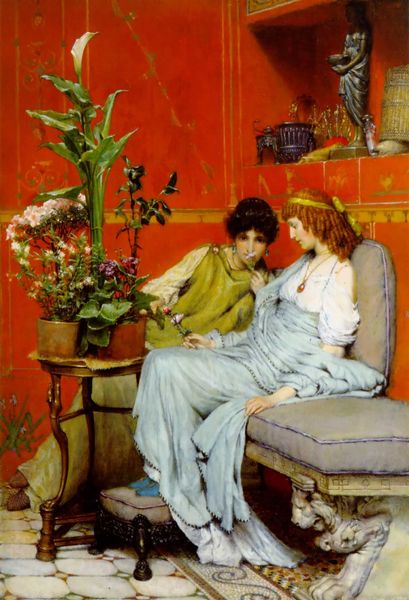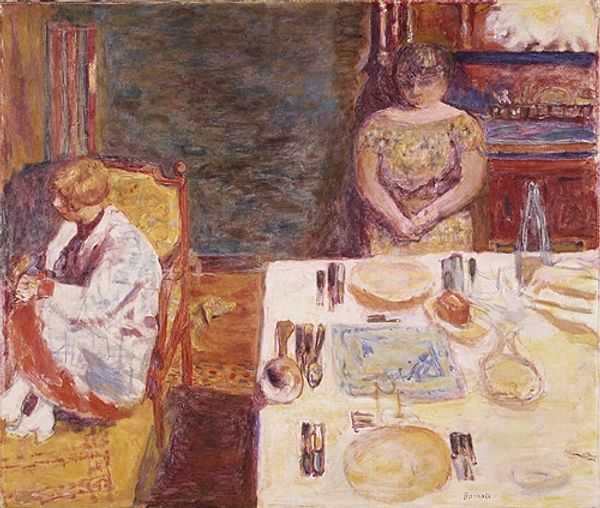
Madame Theo van Rysselberghe and Her Daughter 1899
0:00
0:00
theovanrysselberghe
Royal Museums of Fine Arts of Belgium, Brussels, Belgium
Dimensions: 96 x 129 cm
Copyright: Public domain
Theo van Rysselberghe created this intimate double portrait of his wife and daughter with oil on canvas, likely in Belgium. The work embodies the pointillist style that Rysselberghe adopted after encountering the work of Seurat. The painting, using tiny dots of pure color, captures a quiet domestic scene. But what does it say about the social dynamics of its time? The artist's wife is shown absorbed in reading, an activity reflecting the increasing literacy and intellectual pursuits of women in the late 19th century. Her daughter, however, looks out at us with a direct gaze, perhaps symbolizing the changing roles and expectations for women in the coming generation. Made in the late 1800's, this painting is a window into the domestic sphere of the European upper-middle class. To understand it better, you might look at contemporary literature and social commentary. These resources can reveal more about the evolving roles of women and the changing family structures of the time.
Comments
No comments
Be the first to comment and join the conversation on the ultimate creative platform.
